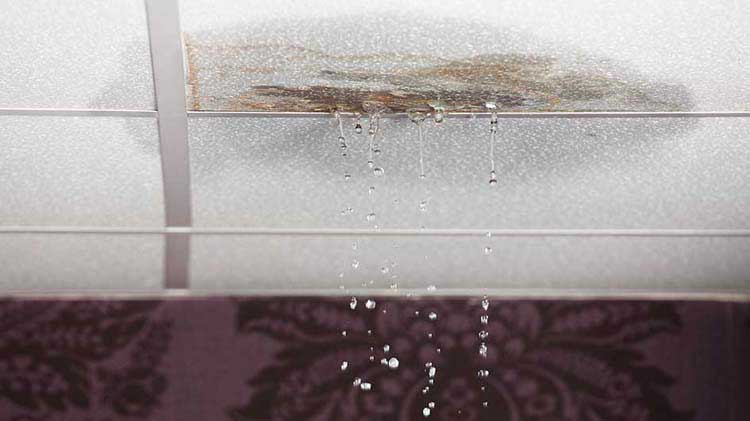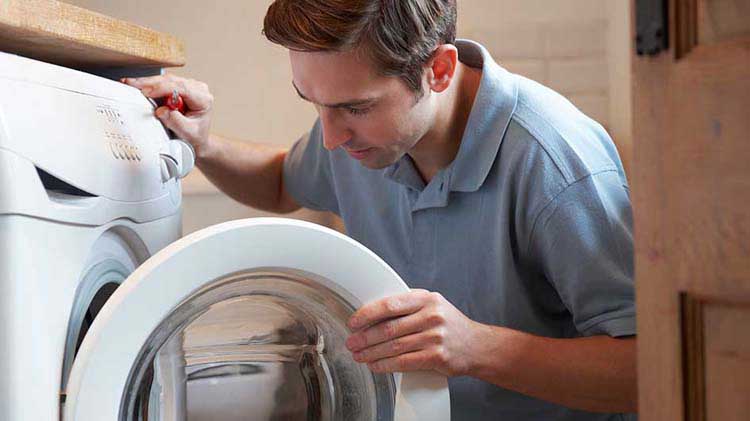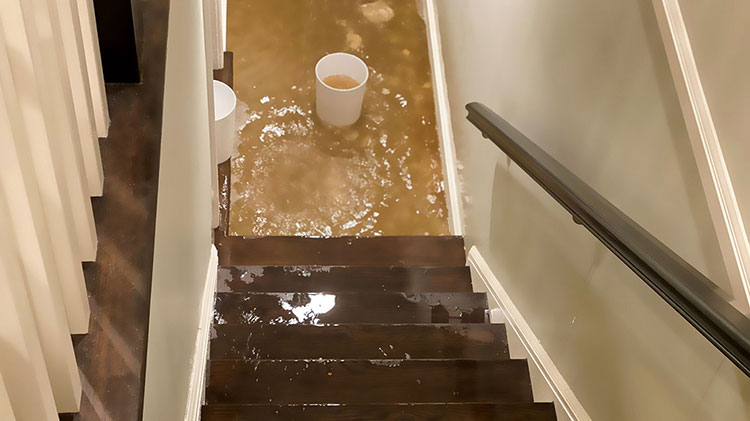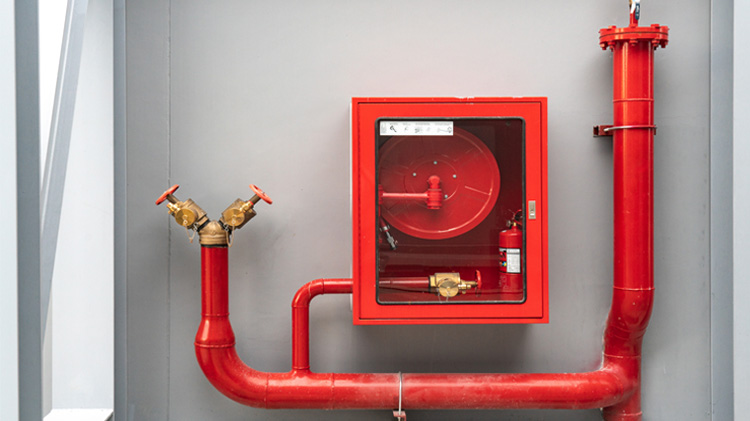Tips to help prevent water leakage at your business or home
Water leakage prevention, precautions and fixes, plus an overview of leak detection systems.
A dripping faucet or a pipe with a slow leak may seem harmless, but even small amounts of wasted water can quickly become expensive problems. And excess moisture can destroy furniture, carpeting, walls and more, causing the need for costly water damage repairs.
Undetected water can also pose a health risk by encouraging the growth of mold, mildew and bacteria. Hiding behind walls, it can worsen allergies or asthma and cause respiratory problems in healthy family members. Save water, money and headaches by learning how to help prevent water leaks, and possible damage, before they start.
Key takeaways
- Toilets, faucets, appliances, pipes and roofing are water sources that can be investigated for possible leaks.
- Checking your water bill, calling your water company or monitoring your water meter are some ways you can identify if there’s a possible leak.
- Performing routine maintenance on both interior fixtures like faucets and water heaters and exterior components like roofing and gutters can help prevent water leaks.
- Water leak detection systems can alert you of a water leak, and in some cases, also shut off water if a leak is detected.
Water damage in your place of business
Water damage in your place of business can be a devastating blow. Not only can it cost you quite a bit to clean up, but it can also slow — or even shut down — business operations.
Whether it's managing the distraction, sending employees home for the cleanup or losing equipment and records, water damage will inevitably cause your business to take a hit. Here are some tips to help identify the source and also strategies that may help prevent water leakage and damage from happening.
The usual suspects of water leakage
Determining where water might come from can go a long way in preventing water damage in the workplace. Here are some water sources to investigate.
Toilets
Considering how often we use them, it's not surprising that toilets are common sources of leaks. It’s estimated that one in five toilets might have a leak. Finding most toilet leaks can be easy.
Ten minutes after flushing, remove the tank cover. If the water level is at the top of the overflow tube, you have a leak. Another way to check: Put several drops of food coloring in the tank. If the color appears in the bowl within 10 minutes, there's a leak. If the toilet valve makes a semi-regular or constant hissing or gurgling sound, there's likely a large leak.
Faucets
The drip-drop of a leaky faucet or showerhead is more than a nuisance. The EPA states that just one drip per second can waste more than 3,000 gallons of water per year. Damage caused by a leaking sink could cost several thousand dollars to repair. One telltale sign of a leak is decreased or inconsistent water pressure. If you notice such problems with your faucets, it might be time to call a plumber.
Appliances
Common sources for water damage include the water heater, washing machines, dishwashers, refrigerators and air conditioning units. The age of an appliance can be a major factor. Over time, appliances that produce condensation often rust, increasing the chances of a leak. Water supply hoses on washing machines and dishwashers also may develop leaks. Hundreds of gallons of water can escape, resulting in significant damage to the building and property inside.
Pipes and drains
Indoor plumbing is one of civilization's great innovations, but it's not flawless. The pipes that deliver water are common sources of leaks. Plumbing systems are also susceptible to clogs and stoppages, which can lead to overflowing toilets, sinks and washing machines. Grease buildup in kitchen sinks and roots in sewer lines are some of the reasons for clogs and stoppages.
In the winter, pipes can freeze, burst and damage the building and the occupants' personal property. A 1/8th inch crack in a pipe can release up to 250 gallons of water a day.
And the risk increases with age because pipework joints can degrade with time. Common causes of leaky pipes are:
- Rust or corrosion of galvanized steel pipes or of the metal joints and connections of newer PVC or copper piping.
- Too much water pressure; fixtures and appliance hoses can withstand only so much before faltering.
- Cracked or broken pipes and hoses, which can happen with age, pressure or freezing.
Roofing
Deteriorated, missing or damaged roofing materials and ice dams can allow water to enter through the roof and damage ceilings, walls and floors. Inadequate attic insulation and ventilation can speed up a roof's decay and contribute to the formation of ice dams. Exposure to wind, snow, ice, rain and foot traffic can also affect a roof's ability to keep water out. Other roof debris such as leaves, branches and moss can also prevent water from properly flowing or draining off a roof.
How to find leaks
When you picture water damage, you may imagine a flooded basement or a waterfall pouring from a toilet. But most problems don't start with giant splashes; a slow leak that goes unnoticed is more common. Early intervention is key. Waiting too long can inflate your utility bill and allows water to build to a destructive point that can result in costly restoration expenses. How do you know if your home hides water leaks?
- Check your water bill: Review usage amounts during the coldest months. A household of four using more than 12,000 gallons per month may have some serious leaks.
- Call your water company: Ask whether your utility provider has a leak detection program that alerts homeowners of unusually high water usage. If so, find out how the system works, so you can take appropriate action.
- Conduct a meter check: Record your water meter reading; then turn off all water inside and outside your home, and make sure no one uses anything that requires water for two hours. Record the reading again; if it's up, it's likely there's a leak. These procedures can help identify the presence of leaks, but they don't tell you their locations. That requires further investigation, starting with examining the most common culprits: pipes, appliances, toilets, faucets and the home's exterior.
Prevent water leakage: Building interior
Toilets
Often a worn or warped rubber flapper with a bad seal is the source of problems. You may be able to replace the flapper valve yourself at a cost of less than $10. If a new flapper valve doesn't stop the leak, you might need to call a plumber. The problem could be a broken part, such as the refill valve or a loose gasket or bolt. If the problem is a cracked tank or bowl, the only solution is replacing the entire toilet. When replacement is necessary, consider investing in a WaterSense-labeled model. This third-party certification means the toilet uses 20% less water than the federal standard.
Faucets, pipes and showerheads
To stop a slow leak in a faucet, first replace worn inside fittings (washers, gaskets, O-rings, cartridges and ceramic discs) and make sure they are secured tightly. It's also a good idea to remove mineral buildup in the aerator once a year by taking it out and soaking it in vinegar. Showerheads can also cause water issues, but fixing a leak is often as simple as using Teflon tape and a wrench to tighten the connection between the pipe stem and the showerhead. Replacing the washer or O-ring inside the showerhead may also do the trick. As with a faucet, it's also wise to remove the showerhead annually and soak it in vinegar.
When the weather turns cold, a trickle of water from both hot and cold faucets may help prevent frozen pipes. Another good idea is to open cabinet doors to allow heat to get to pipes under sinks and appliances near exterior walls. And be sure to insulate water pipes that are exposed to freezing temperatures or drafts, such as those located in garages, attics, crawlspaces and basements, to help reduce the chance of leaks from frozen pipes.
Grout
Re-caulk and re-grout around sinks, showers and tubs. Leaking shower pans and loose or missing tiles should be repaired.
Washing machines
Check and replace washing machine hoses every 3 to 5 years as part of a proactive maintenance program – sooner if there are signs of cracking, bulging or other deterioration. Consider replacing traditional reinforced rubber hoses with stainless steel braided hoses for increased durability and longevity. For additional protection, consider a stainless steel braided hose with a built-in auto-shutoff mechanism. While you’re at it, why not go ahead and replace the hoses on your dishwasher with a steel braided hose.
Water heaters
Tank-type water heaters last an average of ten to twelve years. A tankless unit can last up to 20 years. It is recommended that you drain the water heater once a year to flush out the sediment in the bottom of the tank. Be sure to follow the manufacturer's instructions. Tankless water heaters also need regular maintenance and servicing. And check the unit for any visible corrosion, leaks or bulging. After checking your water heater, be sure to take a look at your water softener and water filtering systems.
HVAC
Regular maintenance by a qualified HVAC contractor will help keep air conditioner pan drain lines clear of deposits that can clog the line.
Prevent water leakage: Building exterior
Water can also come from outside sources. Do you think you're at risk? If so, here are some steps to consider:
- Hire a professional roofing contractor to promptly repair deteriorated or damaged roofing materials.
- Gutters, eaves and downspouts should be free of debris. This will allow water to drain freely. Downspouts should extend away from the building to carry water away from the foundation.
- Adding insulation and ventilation in the attic can extend the life of the roof and reduce the chance of ice dams that can cause water to back up under roofing. The insulation should be in good shape and attic vents clear.
- Most insulation materials can last more than 50 years, as long as they are installed and maintained well. Their thickness and material type can impact their effectiveness. Adding or replacing insulation may be needed to increase efficiency. Improper installation, moisture, UV rays and disturbance can all negatively impact the effectiveness of insulation.
- If your building has outdoor hose connections, remove hoses from hose bibbs in the fall and turn off the water supply to hose bibb connections to help minimize the chance of burst pipes due to freezing.
Hardware that can help prevent water damage
To help keep an eye on these or other trouble spots, you may want to consider installing a commercial water leak detection system. Leak detection systems can be either active or passive.
- Active leak detection systems:These commercial leak detection systems usually generate some type of alarm, but can also stop the water flow. They feature some form of shutoff valve and a means to determine that a leak is occurring. Most devices use moisture sensors to detect a leak. Other systems utilize a flow sensor and a timer to determine that something is leaking and the water needs to be turned off. An active leak detection system can operate for an individual appliance or control a whole property.
- Passive leak detection systems: These commercial leak detection systems, also called 'water alarms,' are intended to alert you to a possible water leak. They generally sound an audible alarm tone in as little as 1/16th of an inch of water. Some may also feature a flashing light. Passive systems are frequently battery-operated, stand-alone units. They can be inexpensive and easy to install. Some simply sit on the floor, while others may be wall mounted. A moisture sensor is located on the bottom of the unit and activates the alarm when it becomes wet. Battery-operated devices need to be tested regularly, and the batteries should be replaced on a periodic basis. Use the alarms under or near toilets, sinks, refrigerators with icemakers, dishwashers, washing machines, water heaters, sump pump pits, whole-house humidifiers, window air-conditioning units and any areas that leaked previously.
- In areas where the water pressure coming from a municipal water supply might vary, a water pressure regulator could help. The specialized valve brings the water pressure down to a safer level before the water enters the plumbing in the building. High water pressure can put a strain on fixtures and appliances and cause damage.




